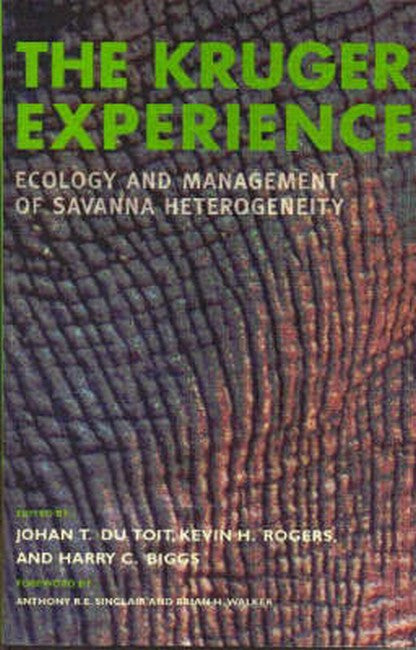Foreword
Part I. The Historical and Conceptual Framework
Chapter 1. The Kruger National Park: A Century of Management and Research
Chapter 2. Biotic and Abiotic Variability as Key Determinants of Savanna Heterogeneity at Multiple Spatiotemporal Scales
Chapter 3. Adopting a Heterogeneity Paradigm: Implications for Management of Protected Savannas
Chapter 4. An Adaptive System to Link Science, Monitoring, and Management in Practice
PART II. A Template for Savanna Heterogeneity
Chapter 5. The Abiotic Template and Its Associated Vegetation Pattern
Chapter 6. Biogeochemistry: The Cycling of Elements
Chapter 7. Fire as a Driver of Ecosystem Variability
Chapter 8. Surface Water Availability: Implications for Heterogeneity and Ecosystem Processes
Chapter 9. River Heterogeneity: Ecosystem Structure, Function, and Management
PART III. Interactions between Biotic Components
Chapter 10. Interactions between Species and Ecosystem Characteristics
Chapter 11. Vegetation Dynamics in the Kruger Ecosystem
Chapter 12. Insects and Savanna Heterogeneity
Chapter 13. Birds: Responders and Contributors to Savanna Heterogeneity
Chapter 14. Large Herbivores and Savanna Heterogeneity
Chapter 15. Rainfall Influences on Ungulate Population Dynamics
Chapter 16. Kruger's Elephant Population: Its Size and Consequences for Ecosystem Heterogeneity
Chapter 17. Wildlife Diseases and Veterinary Controls: A Savanna Ecosystem Perspective
Chapter 18. Large Carnivores and Savanna Heterogeneity
PART IV. Humans and Savannas
Chapter 19. Anthropogenic Influences at the Ecosystem Level
Chapter 20. Beyond the Fence: People and the Lowveld Landscape
Chapter 21. Heterogeneity and Management of the Lowveld Rivers
Chapter 22. Integration of Science: Successes, Challenges, and the Future
Chapter 23. Reflections on the Kruger Experience and Reaching Forward
Index

